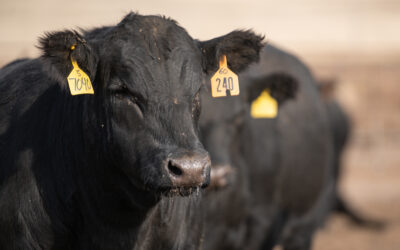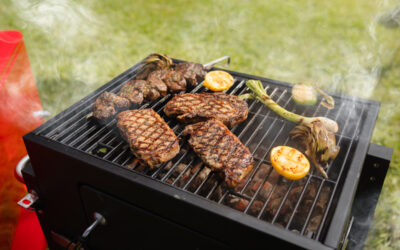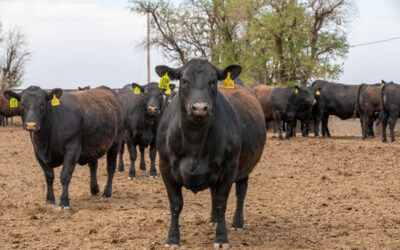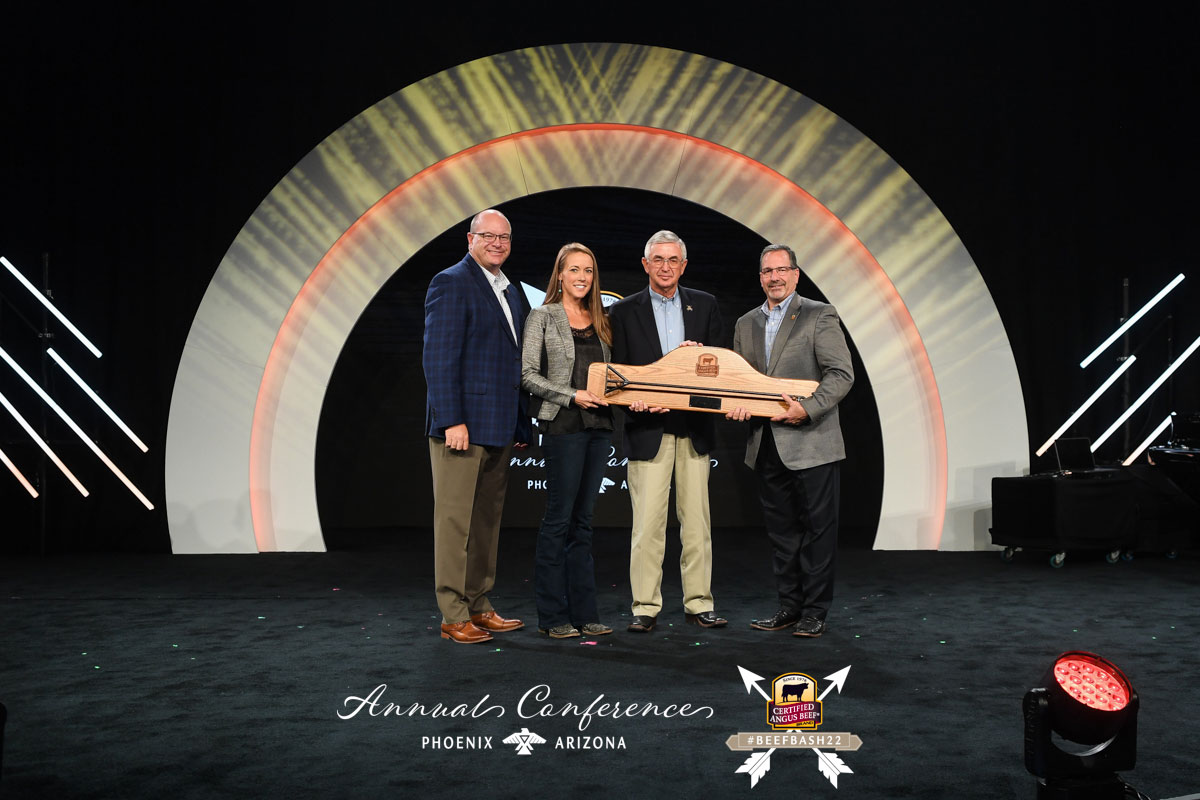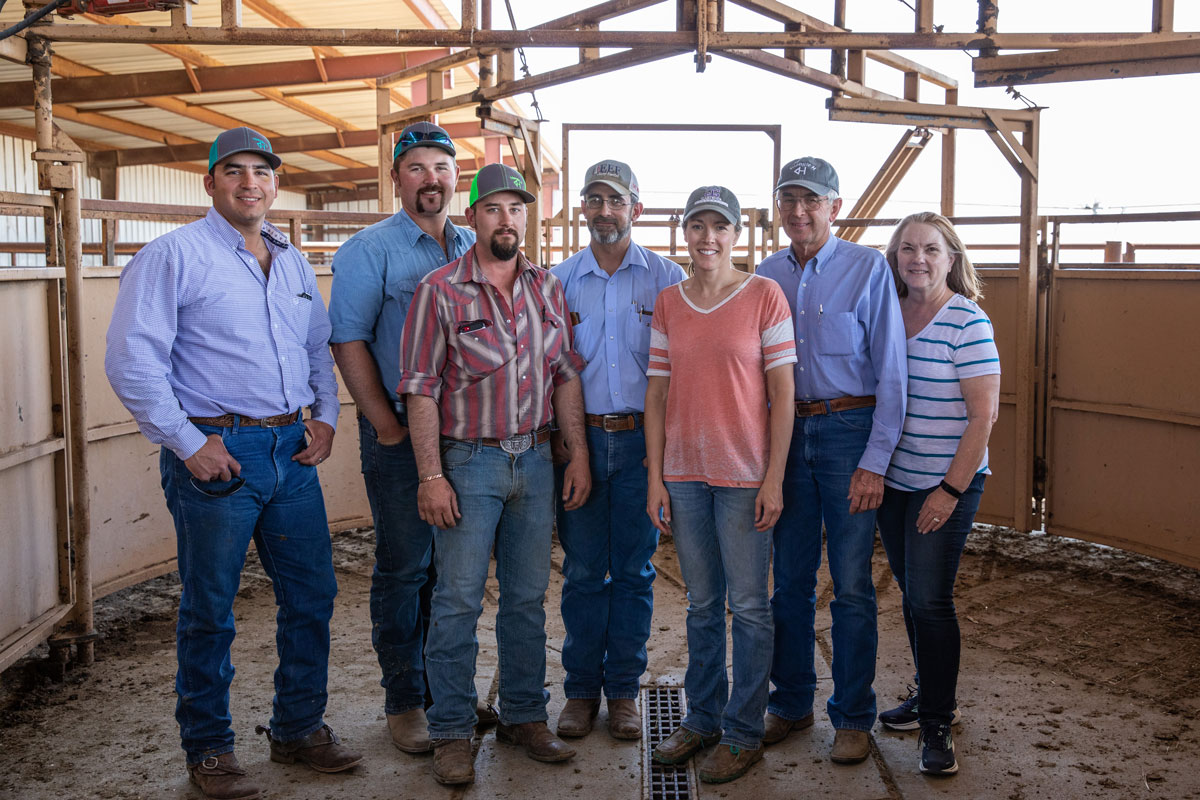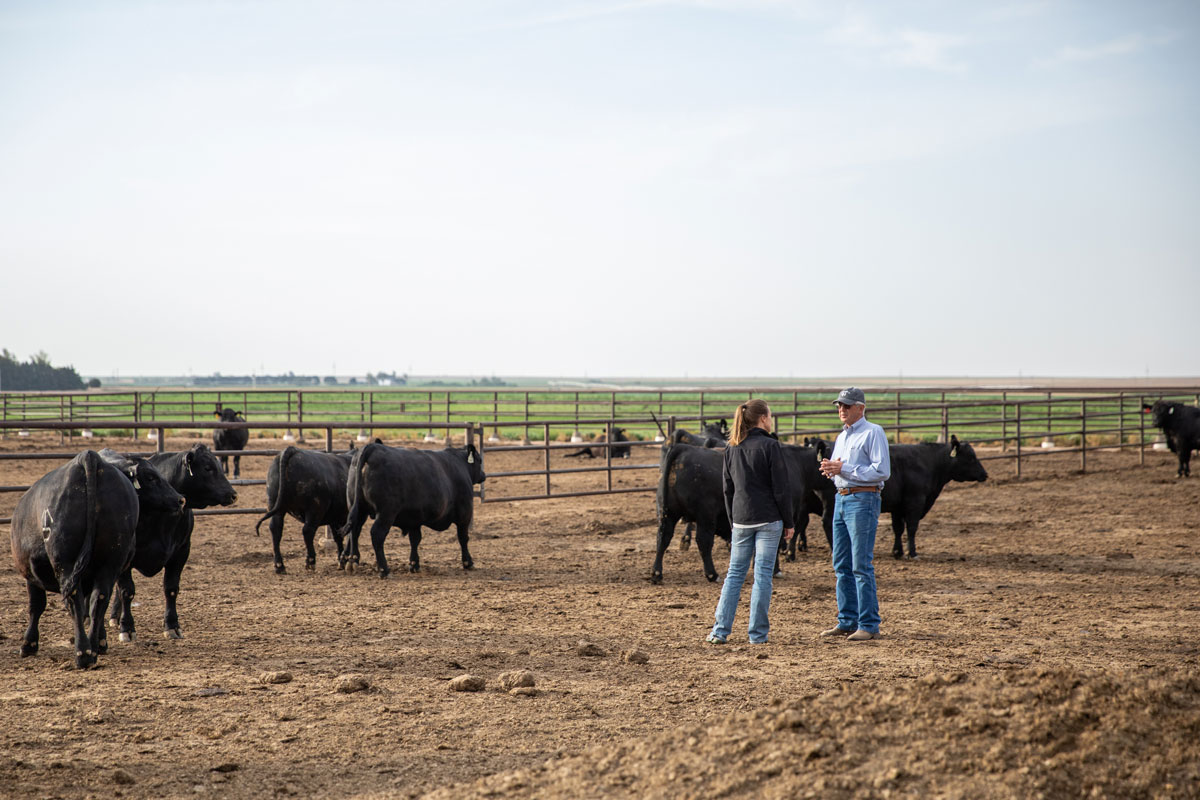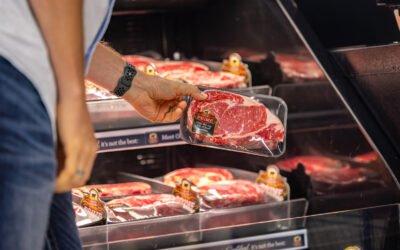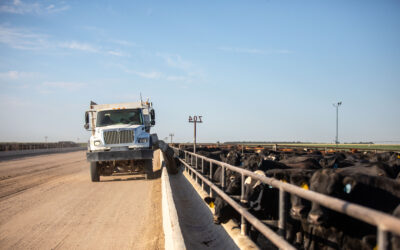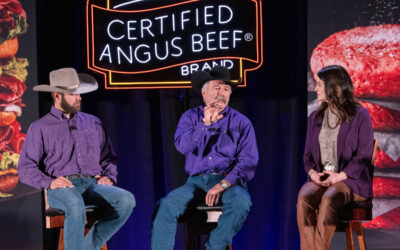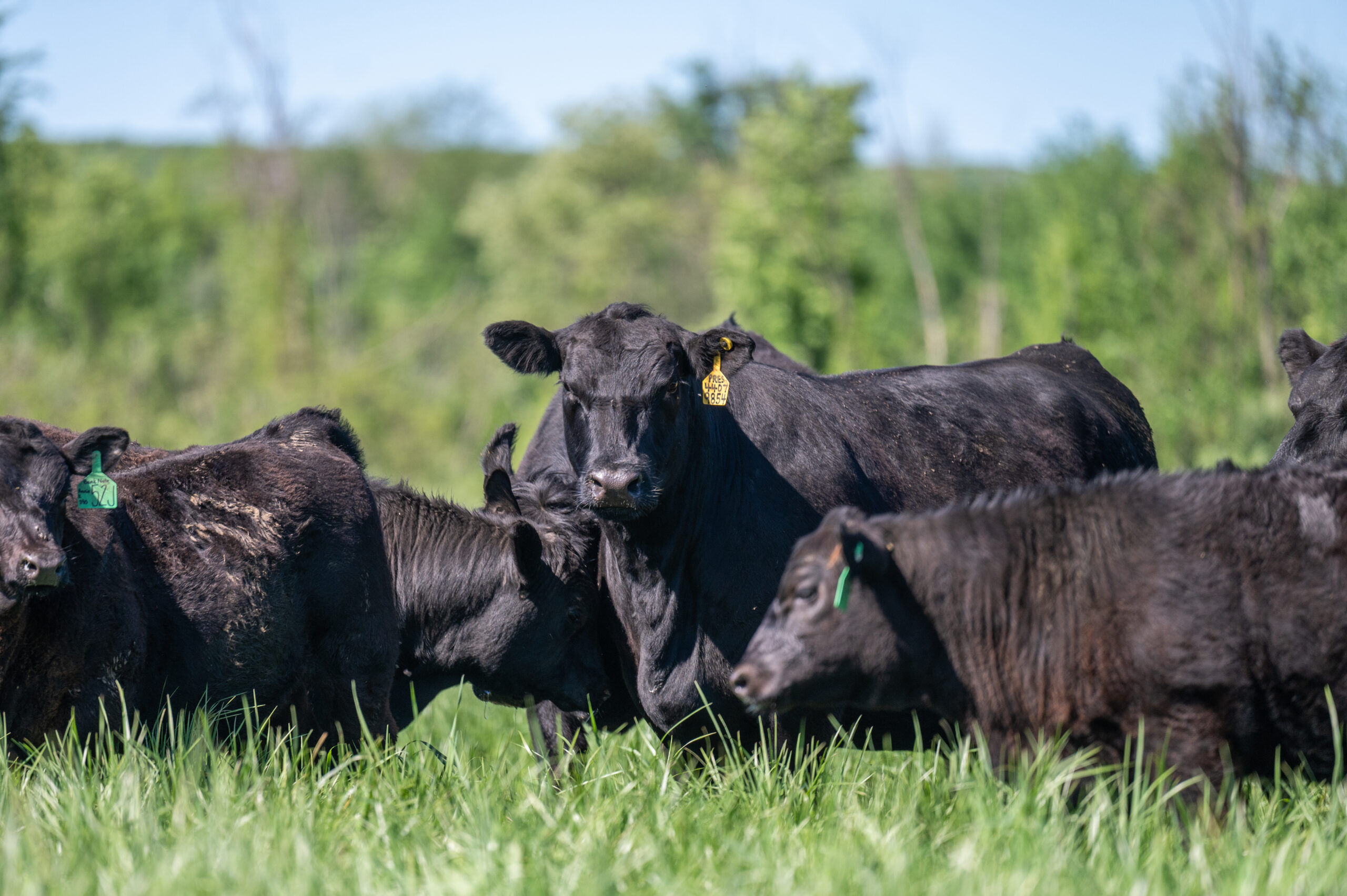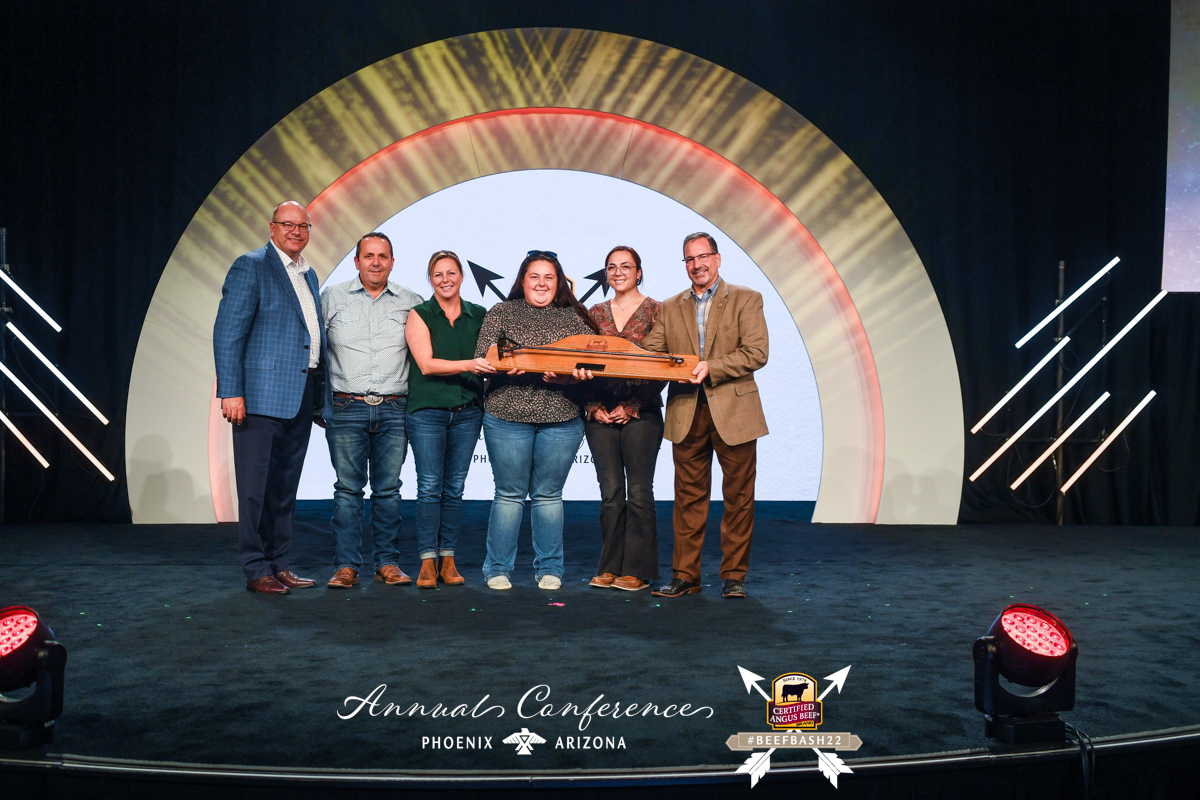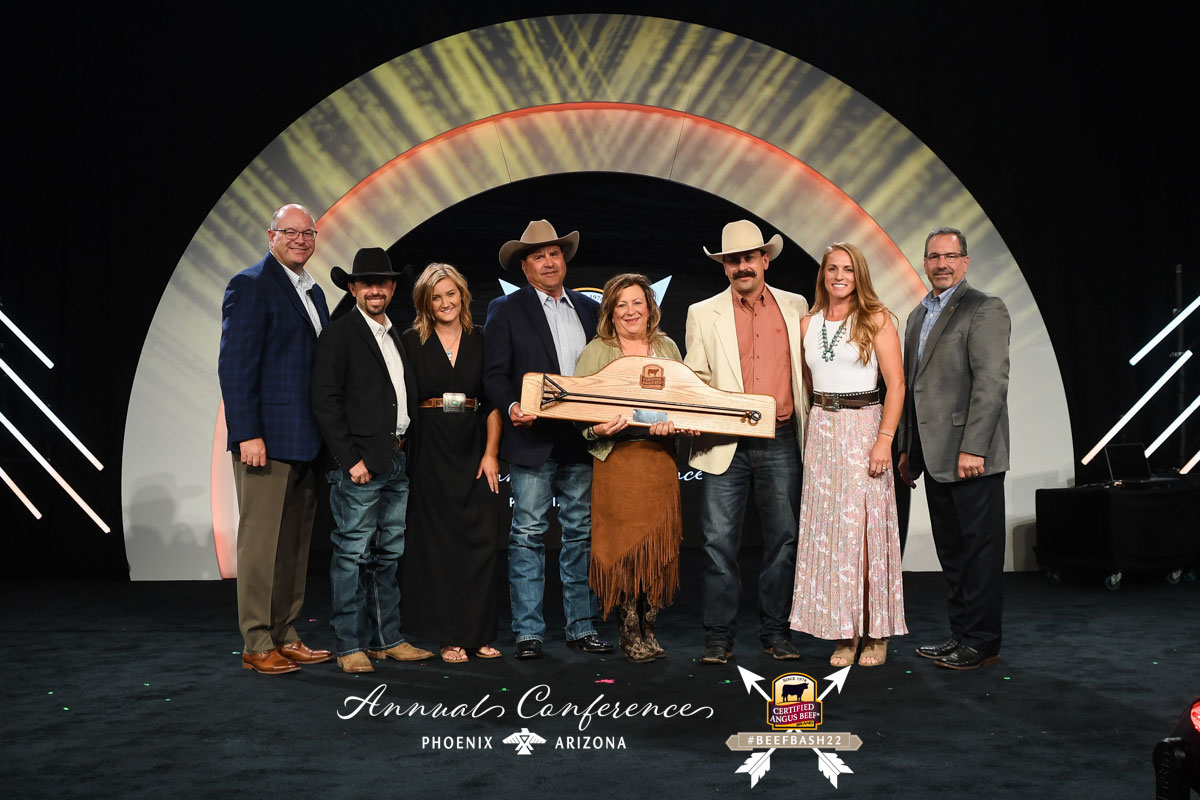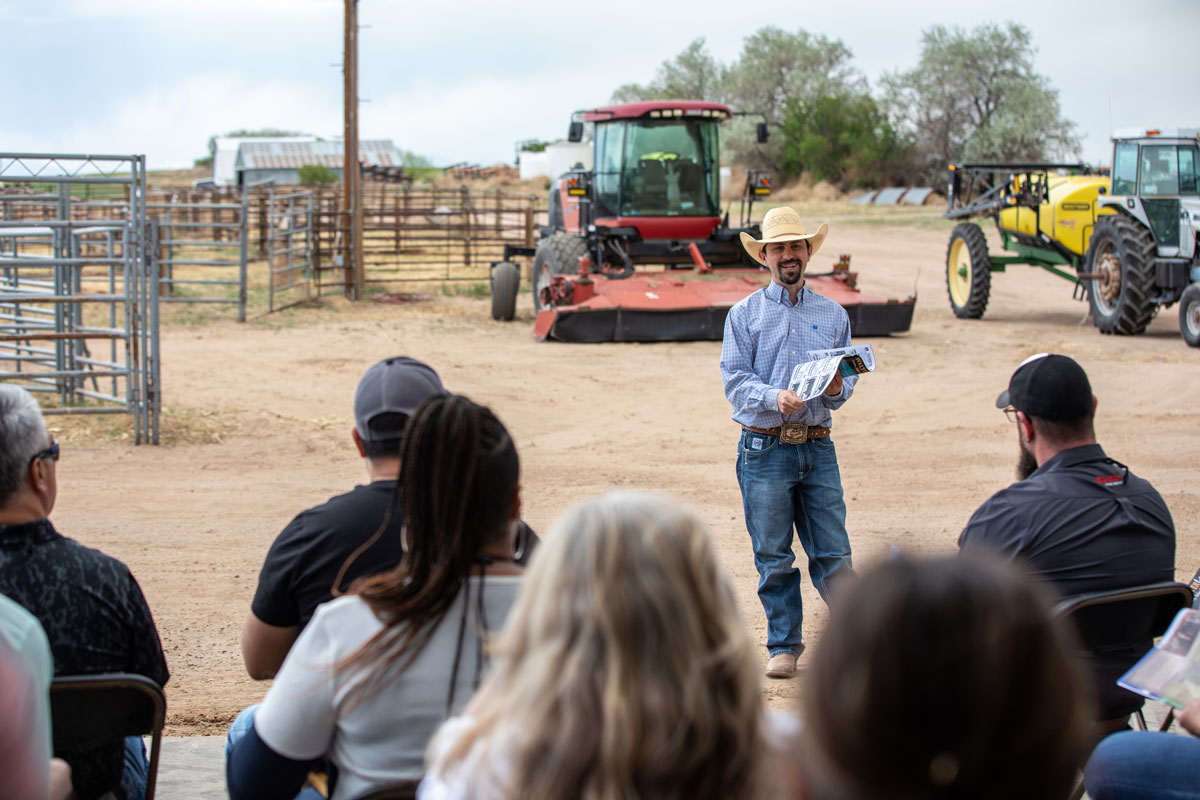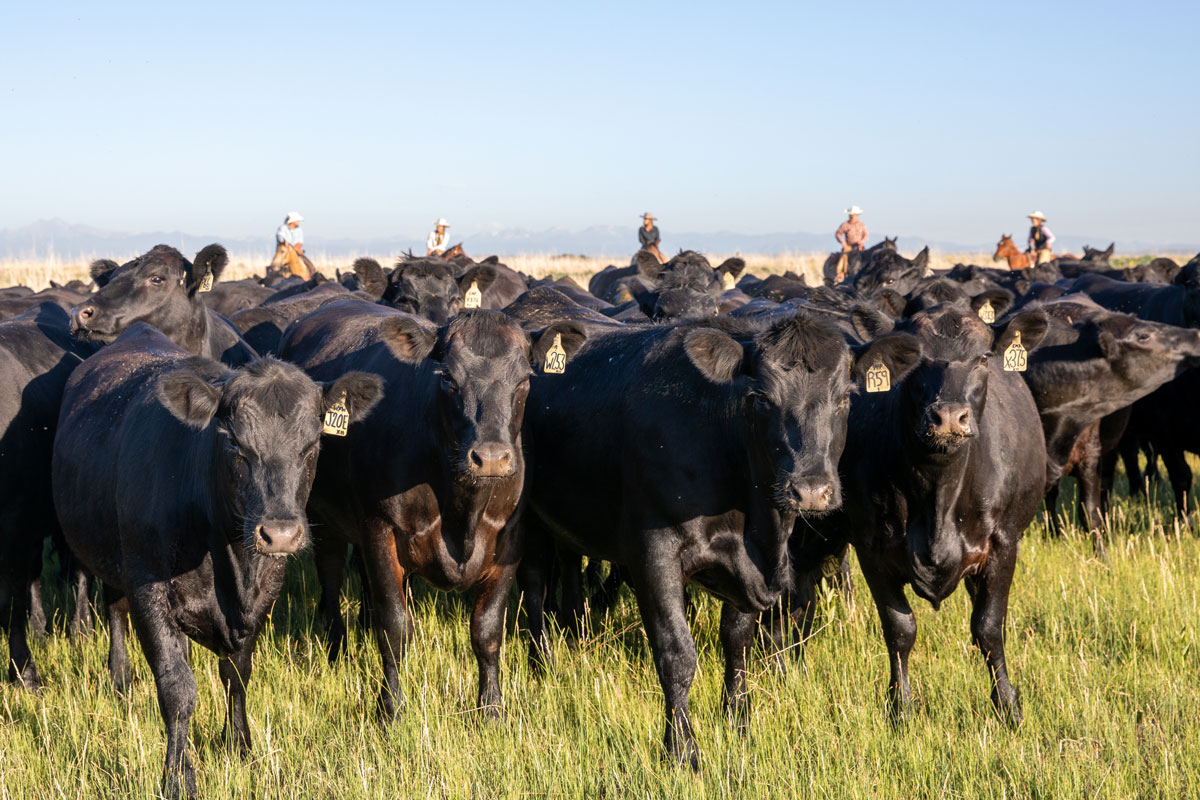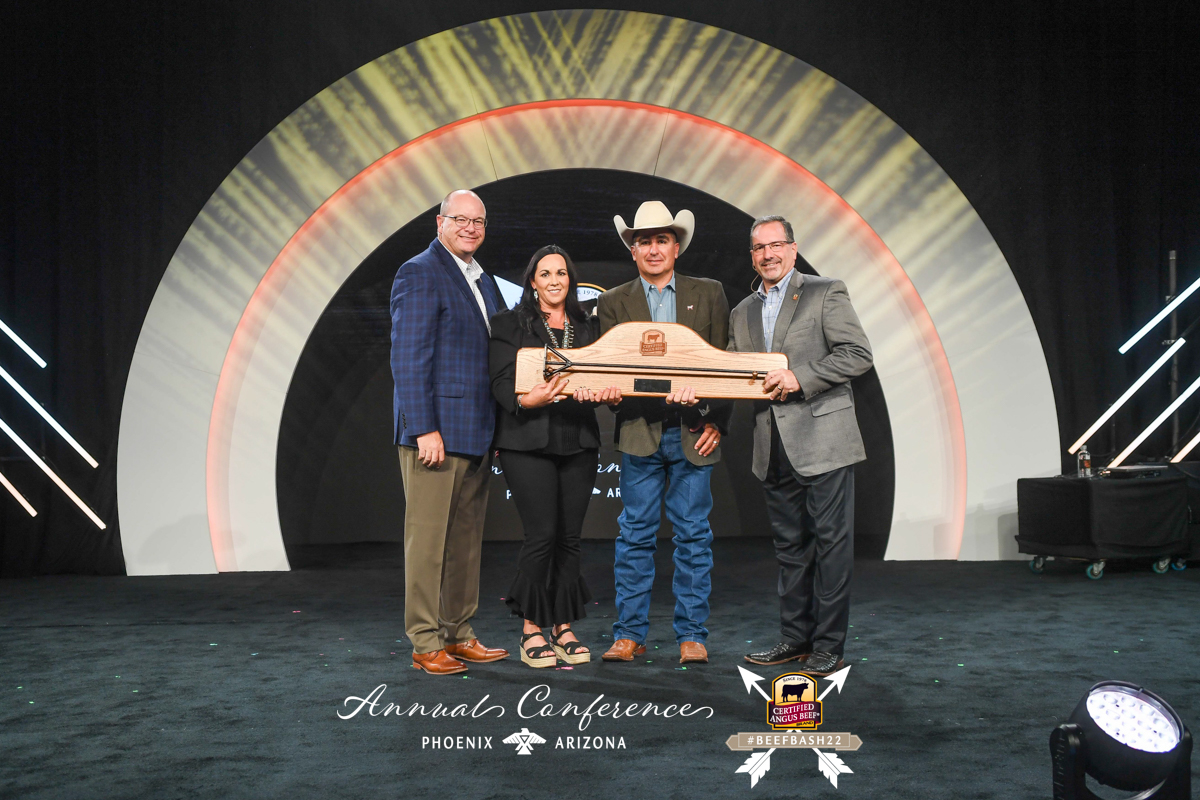
Kansas Family’s Forward Thinking Earns 2022 Progressive Partner Award
By Kylee Kohls Sellnow
October 11, 2022
Progress. For many, the word is one that often feels intangible, hard to grasp or clearly define.
“Progress means that we are measuring improvement, coming up with a benchmark and knowing where we are today and where we want to go,” says Debbie Lyons-Blythe. “Not always making change, but always moving forward.”
Adapting Angus cattle to perform better, in tandem with the land, and create a better end product is a labor of love 33 years in the making for the Blythe family. Every year they’ve improved one breeding decision, management change, farm tour and conversation at a time.
“Cattle producers and consumers are all vitally important to the progress of our environment, animal welfare and making sure our businesses are profitable,” Debbie says.
Working toward a better beef business for themselves and the industry earned Blythe Family Farms the 2022 Certified Angus Beef (CAB) Progressive Partner Award. They accepted the award at the brand’s Annual Conference in Phoenix on Sept. 30.
Succession plans aren’t traditional dinner table conversation for most parents and their 20-something years-old children and spouses. But it’s a frequent topic at Blythe Sunday dinners.
Duane and Debbie may have many more able years ahead, but they’re already transitioning the farm to their five children.
“Working together, we’ve helped them and created an opportunity for them to learn the best practices from us,” Duane shares. “They’re going to find ways to build a better fence down the road, but they’re not going to make the same mistakes I made.”
The transition kit includes digital photos of pastures, plants and notes on weather and dates. Debbie says it’s easy to reference management when questions arise on when to move cattle or burn a pasture.
This record-keeping practice and forward-thinking model helps find ways to make the farm better.
“Progress is difficult to define without the ability to compare to a baseline,” Debbie says. “We have to be able to utilize this land in such a way that it will raise more food. We have to follow best-management practices and make sure we are doing a better job with what we have.”
Doing so led to 175 registered Angus cows, 225 commercial females and a 375-head heifer development program.
With the rich native grass resource, they decided 17 years ago their time, skills and resources would be best spent in a commercial heifer program.
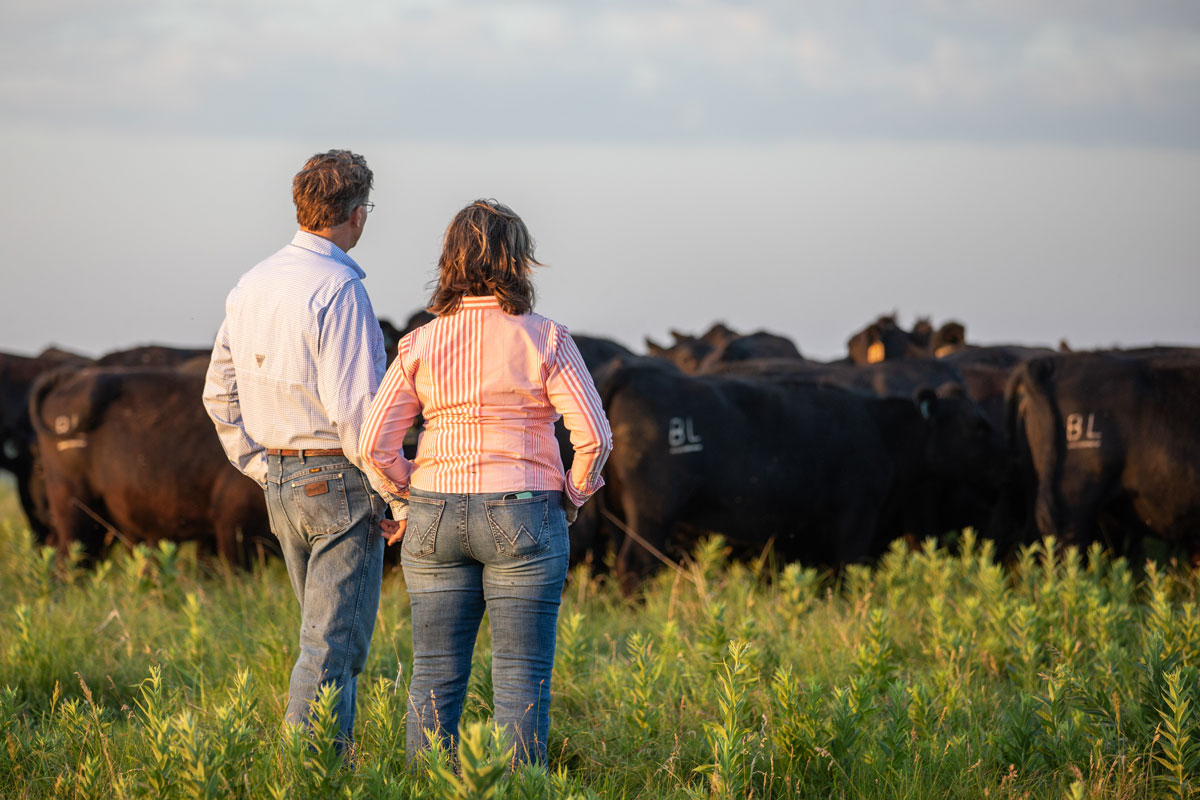
“We typically purchase heifers from families with cattle that have genetics we know,” Debbie says. “I prefer weaned and preconditioned with two shots and bunk broke, but we’re willing to do the work. The longer we own them, the better those heifers settle to AI.”
After artificially inseminating (AI) once to a proven sire, heifers go to native grass with Blythe Angus bulls for 60 days for a tight calving interval starting February 1. Debbie uses an EPD (expected progeny difference) benchmarking system created to find ideal matings. Birth weight, weaning weight and marbling are priorities.
“We rely heavily on genomics when we’re selecting bulls,” she explains. “I believe strongly in carcass EPDs, especially marbling. If the hot new bull doesn’t have a good marbling score, I won’t use him. I just feel like it’s my responsibility to be able to create good beef.”
Bull customers rely on her decisions, too.

Many have commercial herds and retain ownership of their calves, but they leave the EPDs to Debbie. Making sure they meet both cattle customer and beef consumer demands, the Blythes often retain ownership on their calves at Tiffany Cattle Company.
A pen sold in 2021 graded 97% Choice or Prime, with 90% making CAB or Prime. Just more data pointing to progress, if not quite perfection.
The connection to the plate doesn’t stop there. The Blythes are constantly building bridges for people who want to know who raised their food. The modern cattle business is only sustainable with demand for high-quality beef raised on productive land and food influencers and customers who understand that.
Many food bloggers, chefs, foodservice salespeople and retailers have had their first ranch experience at Blythe Family Farms. Whether it’s opening the gate or giving time to industry endeavors, the beef industry can often count on the Blythe’s to share their time, talents and treasures. Most recently, Debbie was elected Chairman of the U.S. Roundtable for Sustainable Beef (USRSB).
“Sustainability is taking care of the land, animals, people and making money,” she says. “My involvement in the USRSB is part of what will make it possible for my kids to continue to farm and ranch.”
Progress with tools, data, continuing education and a willingness to have the hard conversations over the dinner table or in the board room make their legacy a defining one that will only get better with time.
You May Also Like…
North to South Weights and Grade
CAB carcass certification rates unsurprisingly mirror the contrast seen in the grading data. While carcasses must meet all 10 specifications, the importance of the marbling specification in brand acceptance lends the trend to follow regional grade tendencies.
Progress, Not Complacency
Beef demand has been exceptional because of dramatic increases in consumer satisfaction for a few decades. Since taste ranks at the top of the list when it comes to what drives consumers to choose beef, we know where our figurative “bread is buttered.”
Cutout and Quality Strong
Summer weather has begun to set in with more regions of the country set to experience hotter temperatures. This means the traditional turning of consumer focus toward hamburgers and hot dogs rather than steaks, the spring favorite.

